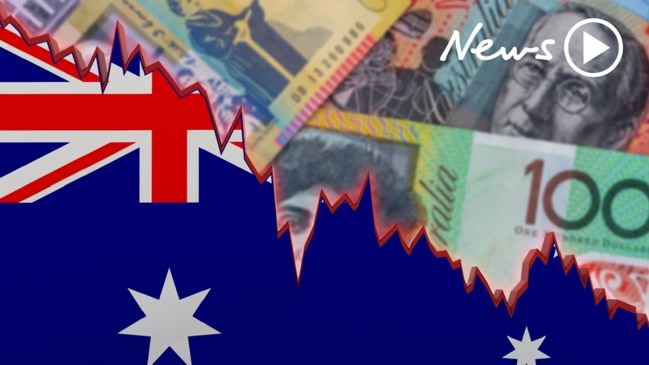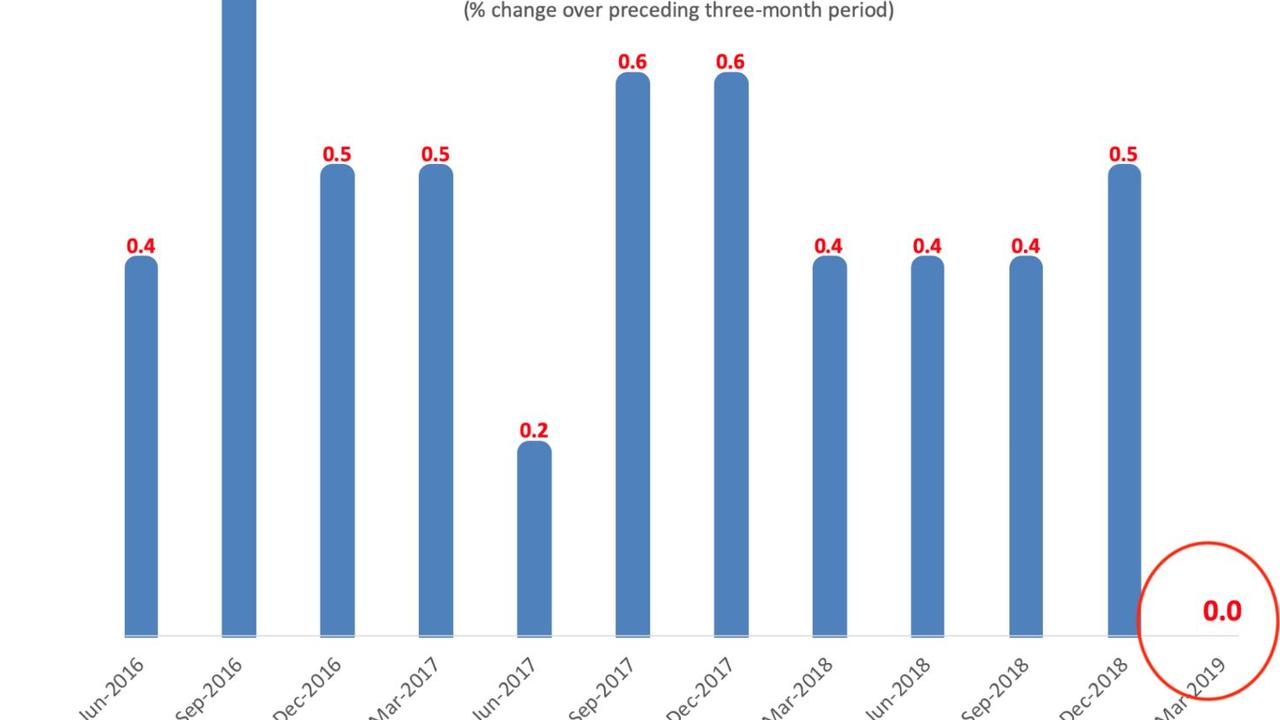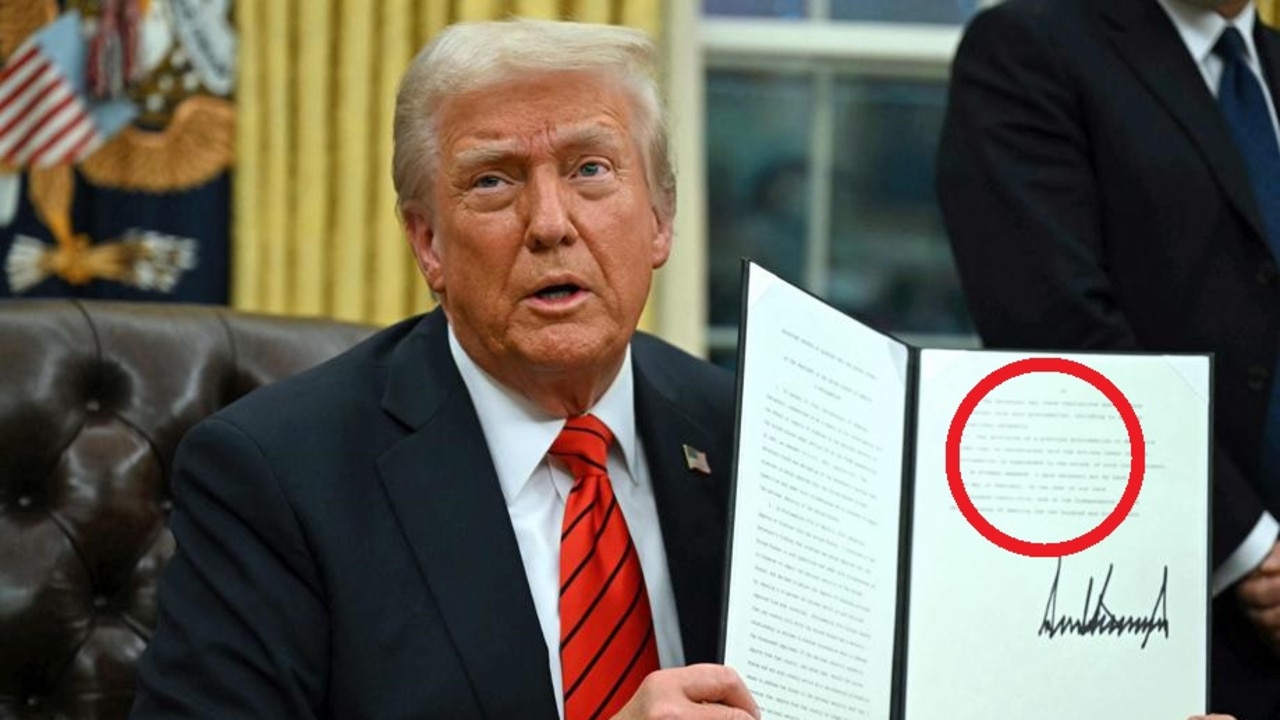Huge warning sign for Australian economy
It might sound like a good thing, but this plunging number means something has gone horribly wrong with Australia’s economy.

Australian inflation is at zero, in a huge sign something has gone horribly wrong in the economy.
The Australian Bureau of Statistics reported that the change in consumer prices between the start of January and the end of March was 0.0 per cent. The failure to record any inflation is a sign of an economy operating well below its potential.
The result of zero is not only shocking on its own — it exacerbates weak inflation outcomes reported over the last few years.
The Australian dollar plunged after the news and pressure is mounting on the Reserve Bank of Australia to act.
BUT WHY WOULD WE WANT INFLATION?
Too much inflation is bad. If prices rise too fast, our money is worth less and less. But deflation is even worse.
When prices are falling, it makes sense to stop spending now and wait for prices to fall. In this way deflation strangles the consumer economy and can cause recessions that put many people out of work.
To try to avoid deflation, the Reserve Bank of Australia does “inflation targeting”. It aims to keep inflation at a low, predictable level of between 2 and 3 per cent a year, on average. Inflation targeting is popular around the world as the best way to promote steady economic growth and prevent mega-inflation, like in the 1970s.
But for now, the RBA’s inflation targeting is not working, as the next chart shows. You’d want average results of 0.6 and 0.7 per cent per quarter to get in the middle of the 2-3 per cent annual inflation range. Inflation has mostly been falling short, and then it hit zero.

WEAKNESS, EVERYWHERE
The Australian economy is showing plenty of signs of weakness other than very low inflation. House prices are falling, wages growth is pitiful, and the underemployment rate is about 8 per cent — much too high.
Unemployment is 5 per cent, which was an impressively low number a decade ago. But these days people can get a few hours employment a week driving an Uber and be counted as employed.
A 5 per cent unemployment rate is not full employment anymore. It is probably equivalent to the old 6 or 7 per cent unemployment, which is to say, it represents a slack labour market where wages growth is not happening.
In the US and UK, unemployment is at or below 4 per cent and with inflation so low, Australia has no reason not to aim for something similar. Our unemployment rate could probably fall to three-point-something without risking high inflation.
Putting all those extra people into jobs would be terrific for them, great for our economy, good for tax revenue, good for company profits, and would help avoid deflation. It’s a shame nobody is talking about it.
HOW DO WE FIX THIS?
There’s two main roads out of our low inflation quagmire. The one everyone expects us to take is cutting official interest rates. It is the RBA after all who are supposed to control inflation.
If they cut interest rates that should inspire companies and consumers to save less, borrow more, and spend more. It should in theory give the economy an immediate boost. But what if it doesn’t do much for the real economy and just props up the housing market?

That’s one major reason the RBA hasn’t already cut interest rates despite low inflation. Rates are already at a record low level of just 1.5 per cent. They worry further cuts will not do much to boost consumer spending, while just making housing investment more attractive.
A second major option for boosting inflation, growth and employment is for the government to stimulate the economy with a bit of spending. They call this fiscal policy. It can boost the economy in three ways:
• Higher spending on things like infrastructure and health;
• more cash transfers – like higher pensions, higher welfare payments, or checks in the mail as Kevin Rudd did; or
• deliver tax cuts.
The government has not done much stimulatory fiscal policy, partly because with the unemployment rate at 5 per cent they didn’t perceive a need to. But also because Australian governments are obsessed by getting to surplus. A surplus is not particularly important for the economy – but the rhetoric of debt and deficit disaster has locked both sides of politics into pretending the budget balance is vital.
Now, there is some debate over whether fiscal policy can really stimulate an economy. Some people say that if the government spends more businesses and individuals spend less. But in my view that’s unlikely, and running a balanced budget while the economy is stumbling is evidence of poor priorities.
The best fix for Australia is probably a mix of interest rate cuts and government spending stimulus. If we boost the economy we should be able to get wages growth going again, get more people into jobs, and get inflation back up into the target range of 2 per cent to 3 per cent.




